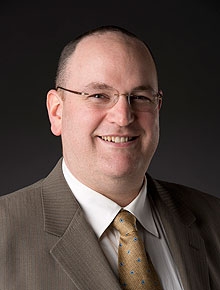“Don’t Spend Away the Windfall: Better Options for Alberta’s Unexpected Revenues,” written by Jack M. Mintz, Trevor Tombe, Joel Emes, and Tegan Hill is timely asit arrives a few weeks before the provincial budget (28 February). This contribution, combining the right leaning Fraser Institute and two well-known University of Calgary economists offers three approaches for considering the windfall by Alberta’s finance minister Travis Toews. The paper’s moralistic title suggests politicians are not to be trusted with windfalls
At this moment, we are also awaiting the report of Todd Hirsch who was engaged by the Alberta NDP to study “how an NDP government can stabilize the province’s finances and build a more resilient economy.” His mandate has been interpreted as what to do with the windfall by an NDP government.
Pay off the Debt
Trevor Tombe argues that at this time the windfall should be used to pay down debt since debt servicing costs are rising and Heritage Fund investment income is unlikely to exceed the costs of borrowing. Referencing Ralph Klein’s gleeful pronouncement that the debt will be paid “in full”. he provides a long-term vision for what to do with Alberta’s current fiscal blessings, courtesy of surging bitumen royalties.
Tombe makes projections about the time frame under which the accumulated debt would be paid off. He assumes current thinking about spending increases *rate of inflation plus population growth) and that surpluses would not used to add to Alberta’s savings accounts. His arithmetic (Figure 2) shows a range of pay-back ranges with a medium prediction of full repayment by 2030.
Critical to Professor Tombe’s model are assumptions on oil prices. His range of possible future oil prices goes from $70-$100 U.S. per barrel. At the present time this oil price aligns with most forecasts and futures markets. As with the other chapters in this 42-page report, it is assumed, but not specifically acknowledged, that Alberta’s fiscal policy will continue to be driven entirely, or putting it less charitably held hostage, by the vicissitudes of oil prices.
While oil price volatility is recognized, Tombe does not offer price ranges below $70 which would put the promised land of debt retirement well off to the distant future- in Tombe’s model well after 2038. There is no acknowledgement of the vulnerability of associated revenue sources, such as personal and corporate income tax, which are positively correlated with lowerv oil prices.

Professor Tombe’s model also depends on assumptions about the future course of oil and bitumen production. He adopts the Canadian Energy Regulator’s 2021 report which forecasts current bitumen production of about 3-million bbl/day to grow to about 3.5-million barrels by 2030. This assumption is highly problematic given Ottawa’s pledge to reduce GHG emissions from the fossil fuel industry by 42 per cent by 2030.
Nowhere in the piece is there reference to the laser thinking of Danielle Smith in her 2021 SPP paper that Alberta’s fiscal dilemma arises is
“not a lack of diversification in industry, the problem is a lack of diversification in the provincial government’s source of revenues, and a lack of innovation in the public service as a whole” (p. 6, emphasis added).
We cannot balance the budget on resource revenues alone. We cannot balance the budget on tax increases alone. We cannot balance the budget on spending cuts alone. We have to do all three. (p.7. emphasis added).
But what a difference a change in political leadership and the price of oil makes in this province!
Tombe’s modelling assumes the status quo of a fossil fuel-driven economy and fiscal policy, will persist. This seems reasonable at first blush because it is highly unlikely a change of government will result in an radical shift in fiscal policy under a New Democrat government.
Since 1965 the Alberta government has never generated a budgetary surplus without the addition of resource royalties.
Besides unknown future political dynamics, there remains a highly fluid policy environment for the energy industry as pressures continue to build to reduce fossil fuel dependency. While the Russian invasion has breathed new life into the oil price, currently Big Oil’s high levels of profitability and their use is coming under intense scrutiny. Special dividends, increased dividends and share buybacks have captured the attention of the media and world governments. In addition the proposed RStar program is even being questioned by industry officials.
In Alberta there remains the elephant in the room which has been ignored for far too long- the trillion litres of toxic tailings ponds which are growing daily. The seeming indifference of industry leaders and Alberta ministers and regulators to this question will continue to be publicized by aboriginal and environmental leaders. Recent disclosures from Imperial Oil about tailings pods leaks do little to enhance confidence in the industry’s plans to deal with the issue.
In a recent column in The Globe and Mail, Dr. Tombe provides a broader cast to his analysis noting
there are risks to my projection. Oil prices are volatile and global economic conditions are uncertain. Over the past year, for example, prices for West Texas Intermediate oil have ranged from roughly US$70 to more than US$120. Such swings have massive implications for the provincial budget. Roughly speaking, each US$1-per-barrel drop reduces the provincial surplus by $600-million.
This means that at $70 U.S./bbl a surplus of $12.3-billion for 2022-23 with an estimated average of $91.5 U.S./bbl evaporates significantly at $70 U.S./bbl given that each $1 U.S. represents $600-million (Mid-year fiscal update). This is exactly the problem that rating agencies grapple with when assessing Alberta’s creditworthiness. With anticipated goodies in February’s budget and current oil price levels of $75-$80 U.S./bbl full debt repayment by 2030 looks less realistic. Still Toews might be tempted to borrow from Ralph Klein’s 2000s playbook and set a course for debt payback.
Savings and stabilizing provincial finances in the long-term
Joel Emes and Tegan Hill discuss putting the windfall into savings. The authors commence by reprising the history of resource royalty dependence (Figure 1) which illustrates that over the past 60 years the contribution to total provincial revenue ranges from 6.5 per cent in 2020-21 to an astronomical 70 per cent of total own source revenue in 1980. This fiscal year, resource revenue is expected to be nearly 37 per cent of provincial revenue. This wide variation poses difficulties for budget-makers.
Emes and Hill cite MacEwan economist Ergete Ferede who has shown found “that a $1

increase in real per-person resource revenue is associated with a 56-cent increase in program spending the following fiscal year, but a $1 reduction in resource revenue is not similarly followed by a reduction in program spending.” This phenomenon is not new to Alberta, and we can expect that this tendency will persist without a full public debate on fiscal policy- saving, spending, and revenue.
Perhaps we shall have some discussion on the revenue side if Mr. Toews returns as finance minister after the next election. He was very certain of his desire to see the revenue side examined at various news conferences over the past year. (At the time of writing, it is unclear when the nomination meeting for Grande-Prairie-Wapiti will take place.)
Emes and Hill propose a “renewed “Sustainability Fund.” This borrows from previous failed attempts under the Progressive Conservatives in the 2000s to legislate a budget rule limiting the amount of resource revenue which could go to the operating budget. The legislated fiscal rule was soon broken as sustained revenues emboldened the spending ministries to “catch up” spending- both operating and capital.

Recognizing that prior fiscal rules are loosened due to electoral prospects the authors adopt a suggestion from Ted Morton in 2015. This novel idea, first proposed in my chapter in Boom and Bust Again (2013) (pp.191-192) is to seek through a referendum an amendment to the Alberta Act which would fetter governments from changing fiscal savings rules. This approach may still be appropriate but requires improved public understanding of the province’s fiscal history;
Lower Taxes
Central to Jack Mintz’s taxation philosophy is the notion that tax structures should be designed to “minimize(s) distortions to make the best use of scarce resources (economic efficiency), keeps administrative and compliance costs low (simplicity), and is fair.” Associated with his ideal system is the assumption that tax systems should be “competitive” to attract capital and labour.

After referencing work by SPP researchers Bev Dahlby and Ergete Ferede which purports to show the discouraging effect of high taxes on work and investment, he compares marginal effective tax rates (METR) for 2015 and 2021 between Alberta and its “competitor jurisdictions” in the U.S., Canada, Ontario, B.C., and Quebec. In 2015, Alberta’s “aggregate” METR was 18.2 per cent was the lowest of all the jurisdiction except Quebec (17.2 per cent) and was tied with Ontario (p. 23). “Aggregate” excludes financial services, oil and gas and mining. For manufacturing the story is different since ALberta’s rate was higher than Ontario and considerably higher than Ontario (17.9 per cent to 10.7 per cent).
So in 2015 there was no compelling reason to lower taxes further except to attract manufacturers, Fast forward to two years after the UCP gained office and Alberta’s aggregate METR was 12.1 per cent -lower than all the jurisdictions including Ontario. However, Quebec remained slightly lower at 11.5 per cent. For manufacturing Alberta still remains higher than Ontario and Quebec whose economy is laregely based on manufacturing and services. Thus it is understandable that these jurisdictions would ensure their tax competitiveness is superior than the western provinces which are disadvantaged by their remote location and fewer shipping options.
In my study of Alberta’s Job Creation Tax Cut (Chapter 11 of the Anger and Angst -Jason Kenney’s Legacy and Alberta’s Right edited by Trevor Harrison and Ricardo Acuña, I discovered a massive $4,2-billion giveaway to the four largest bitumen producers. Further, according to an assessment by Alberta Treasury Board and Finance before the 2019 election, officials
“observed the Dahlby-Ferede, McKenzie-Ferede, and Mintz studies use Canadian data for estimates of Alberta tax responsiveness or specific tax rates, making the findings “unreliable in the Alberta context.” The document pointed out that Alberta’s economy is heavily weighted to the oil and gas industry such that estimates of tax rate change responsiveness from many other jurisdictions “may be unreliable in the Alberta context.” The backgrounder noted, “Oil and gas taxation relative to key competing jurisdictions does not appear to be a major barrier to investment in Alberta” (Alberta Treasury Board and Finance, 2019, pp. 1-2).
However, once the election was passed officials changed their tune speaking approvingly of these studies in budget documents.
Mintz next turns to personal income tax (PIT) competitiveness where he laments the NDP move to establishing modest progressivity. The top marginal rate for those earning $300,000 or more went to 15 per cent. Since the Trudeau government also increased the top rate these actions resulted in an increase in the top rate from 39 per cent to 48 per cent. Citing Canada Revenue Taxation data Mintz finds that for income earners above $250,000 per year between 2014-2019 this bracket paid $312-million less in taxes while those below $150,000 paid $161-million more in tax.
Without knowing the income taxable in both years, it is difficult to judge whether the higher rates caused the reduction or simply that high wage earners had lower taxable incomes in 2019 than 2014. In any event the net $219-million reduction is less than 2 per cent of income tax revenue collected. Between fiscal 2015-16 and 2018-19 the NDP years in office, personal income tax revenue rose from $10.8-billion to $11.2-billion, not a great deal. Considering the shape of Alberta’s economy during most of those years, it would not appear that overall, there was a vast exodus of high income earners. Indeed it would seem reasonable that many high income earners in the energy industry and associated fields saw their incomes fall as oil prices fell.
Dr. Mintz proposes a “simplified” PIT with a flat rate of 8 per cent to taxable incomes of $131,229. These measures are designed to “encourage work, savings and risk-taking.” This proposal would cost $3.8-billion or nearly 30 per cent of expected PIT revenue in 2022-23. The “behaviourial effect“ -presumably encouraging more work, savings, and risk-taking is supposed to reduce the loss by $500-million.
He suggests other measures to reduce the revenue loss including collecting the hated carbon tax- not likely something Smith’s UCP will do. Mintz also suggests bringing in a value-added tax harmonized with the federal GST tax which “would make Alberta’s tax structure pro-growth, less volatile, and distributionally fair.” This is also a non-starter in a pre-election period.
As for tax simplification and fairness, Mintz does not suggest removing key provisions of the tax system which favours capital over labour or “small” business over larger businesses, structures that are distortionary. Nor does he suggest raising personal exemption limits to remove more low-income earners from the payroll.
Mint’s “fair” seems to be defined from the perspective of upwardly mobile, well-educated, and highly remunerated risk-takers.
Opinion
Expect that Mr. Toews budget will promote the type of picture that the Fraser/SPP authors portray. Key phrases will include “competent fiscal management,” “debt repayment,” more “savings” and a rosy future for Alberta based on “sound fiscal management.” The UCP will likely stay the course on spending and wage restraint. Perhaps Toews will even offer the tantalizing carrot of lower personal income taxes…if of course the UCP is returned to office.
The oil and gas fairy has once again returned and blessed Alberta’s treasury’s cash boxes. Carrying on with the status will lead to the same outcomes as we have seen in previous turns of this fiscal merry-go-round.
It is all too familiar and depressing. As I quote Al O’Brien in A Sales Tax for Alberta- Why and How, the fact of the matter is that Alberta politicians have been fooling voters for decades, voters who believe they are paying taxes for their services when in fact they have been paying in some years only 30 per cent of the revenue needed to sustain “gold-plated services” to quote Premier Smith in her famous SPP article. And all the while we have Professor Mintz advocating the merits of reducing personal income taxes while oil industry leaders and “Canada Action” remind Canadian (and Alberta voters) how much they are contributing to government coffers.
Related Posts